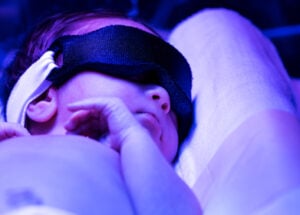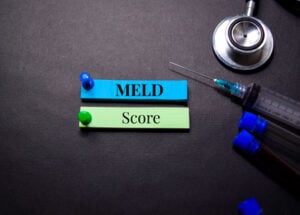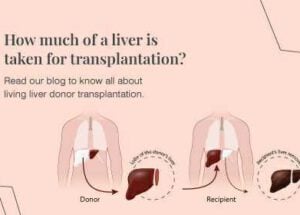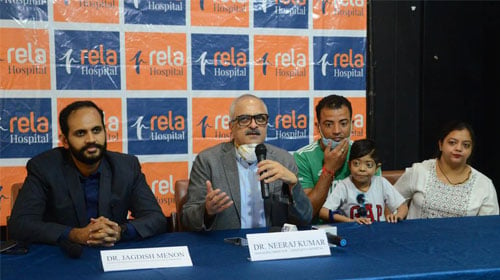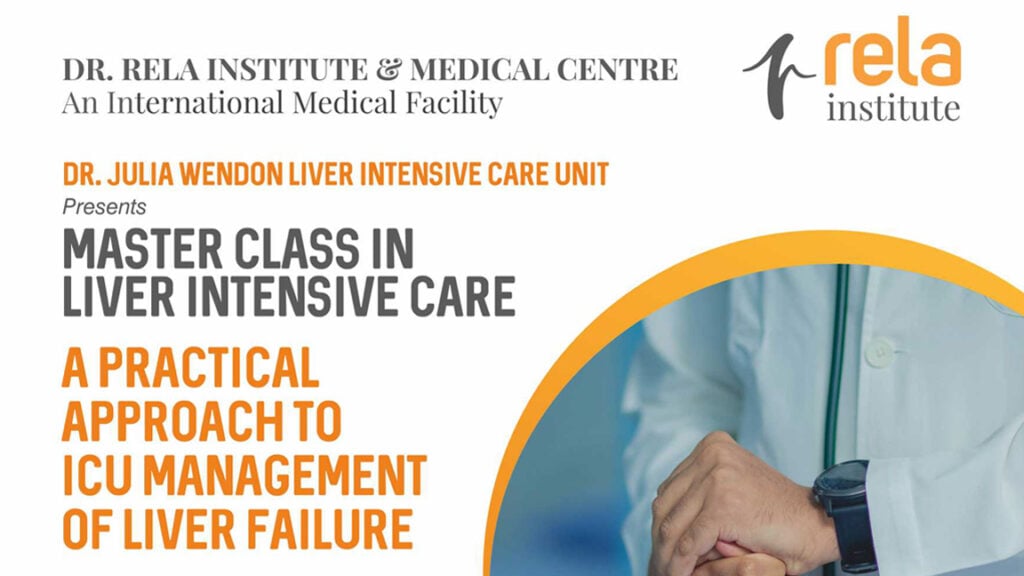Non-alcoholic fatty liver disease (NAFLD), also known as Metabolic Liver Disease, is characterized by the accumulation of fat in the liver. It is also termed as Metabolic Dysfunction-Associated Steatotic Liver Disease (MASLD). It is more common in patients with diabetes. Metabolic syndrome, which comprises central obesity, diabetes mellitus, hypertension, and hyperlipidemia, is closely associated with fatty liver disease.
Signs & Symptoms
Like most chronic liver conditions, patients with Metabolic Liver Disease are asymptomatic until late in their illness, even after progression to cirrhosis. Most patients are rather diagnosed incidentally. NAFLD’s causes could include:
- Enlarged liver
- Fatigue
- Pain in the upper right abdomen
Some other symptoms include:
- Jaundice
- Altered consciousness.
- Fluid accumulation in the abdomen (ascites) and legs
In the case of end-stage patients, signs include:
- Blood vomit and black stools
- Malnourishment and extreme weakness
- Presence of cirrhosis
As with non-alcoholic steatohepatitis and cirrhosis (advanced scarring), possible signs and symptoms include:
- Abdominal swelling (ascites)
- Enlarged blood vessels just beneath the skin’s surface
- Enlarged breasts in men
- Enlarged spleen
- Red palms
- Yellowing of the skin and eyes (jaundice)
Causes
Experts are unable to determine how some people end up accumulating fat droplets within the liver cells. In the same manner, there is very little understanding of how some fatty livers develop inflammation that progresses to cirrhosis. Nonalcoholic fatty liver disease and nonalcoholic steatohepatitis are commonly associated with:
- Overweight or obesity
- Insulin resistance (which means cells don’t take up sugar in response to the hormone insulin)
- High blood sugar
- High levels of fats, particularly triglycerides, in the blood
In some people, the presence of excess fat acts as a toxin to liver cells, causing liver inflammation, which sets off a process leading to scarring and eventually cirrhosis.
Experts tend to believe that many cases of cirrhosis of unknown cause are probably due to NAFLD.
Risk Factors
A wide range of diseases and conditions can increase your risk of NAFLD, including:
- High cholesterol
- High levels of triglycerides in the blood
- Metabolic syndrome
- Obesity, particularly when fat is concentrated in the abdomen
- Polycystic ovary syndrome
- Sleep apnea
- Type 2 diabetes
- Underactive thyroid (hypothyroidism)
- Underactive pituitary gland (hypopituitarism)
Non-alcoholic steatohepatitis is more likely in these groups:
- Older people
- People with diabetes
- People with body fat concentrated in the abdomen
It is difficult to distinguish non-alcoholic fatty liver disease from non-alcoholic steatohepatitis without appropriate testing.
Complications
While MASLD often starts quietly, it can progress to serious health issues, especially when it advances to MASH (Metabolic dysfunction-associated steatohepatitis). Let’s explore the potential complications:
1. MASH with Liver Fibrosis
As MASLD progresses to MASH, fibrosis bands of scar tissue can form in the liver. This happens when the liver attempts to heal itself from repeated inflammation and damage.
Why it matters: Fibrosis can limit liver function and may eventually lead to cirrhosis.
2. MASH-Related Cirrhosis
Cirrhosis is advanced scarring that significantly impairs the liver’s ability to function.
- It can lead to liver failure.
- In some cases, a liver transplant may become necessary.
3. Hepatocellular Carcinoma (Liver Cancer)
MASH raises the likelihood of developing hepatocellular carcinoma, the most prevalent form of liver cancer. Even without cirrhosis, people with MASH can still develop liver cancer.
4. Other Cancers
People with MASLD are at higher risk for certain cancers, including:
- Breast cancer
- Colorectal (colon) cancer
5. Cardiovascular Disease
Heart disease remains the main cause of death among individuals with MASLD. The condition is often associated with:
- High blood pressure
- High cholesterol
- Atherosclerosis (hardening of arteries)
6. Type 2 Diabetes
MASLD increases the likelihood of developing type 2 diabetes, even in people who were previously non-diabetic. Insulin resistance, a key feature of MASLD, plays a central role in this link.
Prevention
To reduce your risk of non-alcoholic fatty liver disease:
- Healthy diet: Choose a healthy plant-based diet that’s rich in fruits, vegetables, whole grains, and healthy fats.
- Maintain a healthy weight: If you are overweight or obese, reduce the number of calories you eat each day and get more exercise. If you have a healthy weight, work to maintain it by choosing a healthy diet and exercising.
- Exercise: Exercise most days of the week. Get an OK from your doctor first if you haven’t been exercising regularly.
Diagnosis
In most cases, as described earlier, NAFLD never shows itself until later stages. Risk factors such as obesity, diabetes, and hypertension indicate the possible presence of NAFLD. Generally, doctors prescribe blood tests to pinpoint the diagnosis and indicate the severity of the disease. The blood tests include:
- Complete blood count
- Liver enzymes and liver function tests
- Tests for chronic viral hepatitis (hepatitis A, hepatitis C, and others)
- Celiac disease screening test
- Fasting blood sugar
- Hemoglobin A1C, which shows how stable your blood sugar is
- Lipid profile, which measures blood fats, such as cholesterol and triglycerides
Blood tests in the early stage of NAFLD may show slightly elevated liver enzymes (AST and ALT), but this condition can exist even with normal liver function tests.
For further testing, doctors recommend imaging procedures. Imaging procedures used to diagnose nonalcoholic fatty liver disease include:
- Plain ultrasound is often the initial test when liver disease is suspected.
- Computerized tomography (CT) scanning or magnetic resonance imaging (MRI) of the abdomen. These techniques lack the ability to distinguish nonalcoholic steatohepatitis from nonalcoholic fatty liver disease, but they may still be used.
- Transient elastography is an enhanced form of ultrasound that measures the stiffness of your liver. Liver stiffness indicates fibrosis or scarring.
- Magnetic resonance elastography, which combines magnetic resonance imaging with patterns formed by sound waves bouncing off the liver to create a visual map showing gradients of stiffness throughout the liver reflecting fibrosis or scarring.
- Ultrasound of the abdomen is readily available, non-invasive, and inexpensive. It may show a ‘bright liver’ suggestive of fatty liver. However, it is not a sensitive test until the fat in the liver is moderate to severe, and abdominal obesity reduces its accuracy. Fibroscan (transient elastography) is a new tool that measures liver stiffness. It identifies fibrosis (scarring) and also the progression of fibrosis that occurs as a consequence of NAFLD. It is simple to use, non-invasive, inexpensive, and reproducible.
Finally, liver biopsy is the best test for detecting and assessing the severity of fatty liver. However, it is an invasive procedure and is not commonly used. A combination of clinical parameters, liver enzymes, and ultrasound is used to diagnose fatty liver disease.
Treatment Options
Lifestyle modification is the most important aspect of treatment for fatty liver disease. This involves weight loss through changes in dietary habits and exercise. Weight loss of 5-10% over 6 months has been shown to improve NAFLD and obesity. Too rapid a weight loss by starvation is not recommended, as it may worsen the problem. Lifestyle changes include:
- Diet: Diet rich in carbohydrates and saturated fats should be avoided. Most fast-food and aerated soft drinks increase liver fat, worsen liver injury and should be avoided. Diets rich in fruits & vegetables with limited red meat consumption are recommended.
- Exercise: Regular exercise such as brisk walking, jogging or swimming helps weight reduction, improvement in liver enzymes and decreases the risk of diabetes. Moderate exercise with expenditure of at least 400 calories, 3-4 times a week improves NAFLD in the short term.
Medication
- Medications: A variety of drugs have been used to treat this condition with unimpressive results and sometimes serious side effects. Some new drugs, such as Losartan and Exenatide, show promise but are still under evaluation. Herbal medications for weight loss are notorious for causing further liver damage and should be avoided.
Surgical
- Bariatric surgery: Bariatric surgery may be considered for morbidly obese (BMI>40) patients who are otherwise unable to lose weight by other measures. Most of these procedures can now be done by keyhole surgery. However, careful evaluation of the severity and stage of liver disease is necessary, as bariatric surgery is contraindicated in patients with advanced liver disease. In such patients, sudden deterioration in liver function can occur.
- Liver Transplantation: Liver transplantation is indicated in patients with end-stage cirrhosis due to fatty liver disease that develops complications such as liver failure or liver tumors.
Why Rela Hospital
Rela Hospital is emerging as the most sought-after destination for all medical problems concerning the liver. It is touted to be one of the best-known medical facilities to address liver disease across the globe.
- Advantages/ Expertise: Expert doctors who have done conducive research and have extensive experience in treating NAFLD are part of Rela Hospital.
Frequently Asked Questions
1. Can you die from fatty liver disease?
In most cases, steatotic(fatty) liver disease (SLD) doesn’t lead to serious complications, and many people go on to live a normal life span, especially when the condition is detected early and managed well.
If SLD advances to cirrhosis and goes untreated, it may result in liver failure or liver cancer, both potentially fatal conditions. Your liver is a vital organ; you can’t live without it. That’s why it’s essential to take action early, follow medical advice, and protect your liver health if you’re diagnosed with SLD.
Timely care saves lives. Managing SLD early can prevent serious outcomes.
2. What is the life expectancy with fatty liver disease?
Life expectancy with fatty liver disease varies based on its stage. With mild to moderate fibrosis, proper care can maintain a normal lifespan. If it progresses to cirrhosis, life expectancy may range from 10–15 years with treatment, but severe cases with complications may reduce it to 3–5 years without a liver transplant. Early diagnosis and regular monitoring are key.
3. How common is non alcoholic fatty liver disease?
Non-alcoholic fatty liver disease (NAFLD) is very common, affecting about 1 in 4 people globally. It’s especially prevalent in Western and Middle Eastern countries due to rising obesity and diabetes rates. NAFLD is projected to be the primary reason for liver transplants in the coming years.



